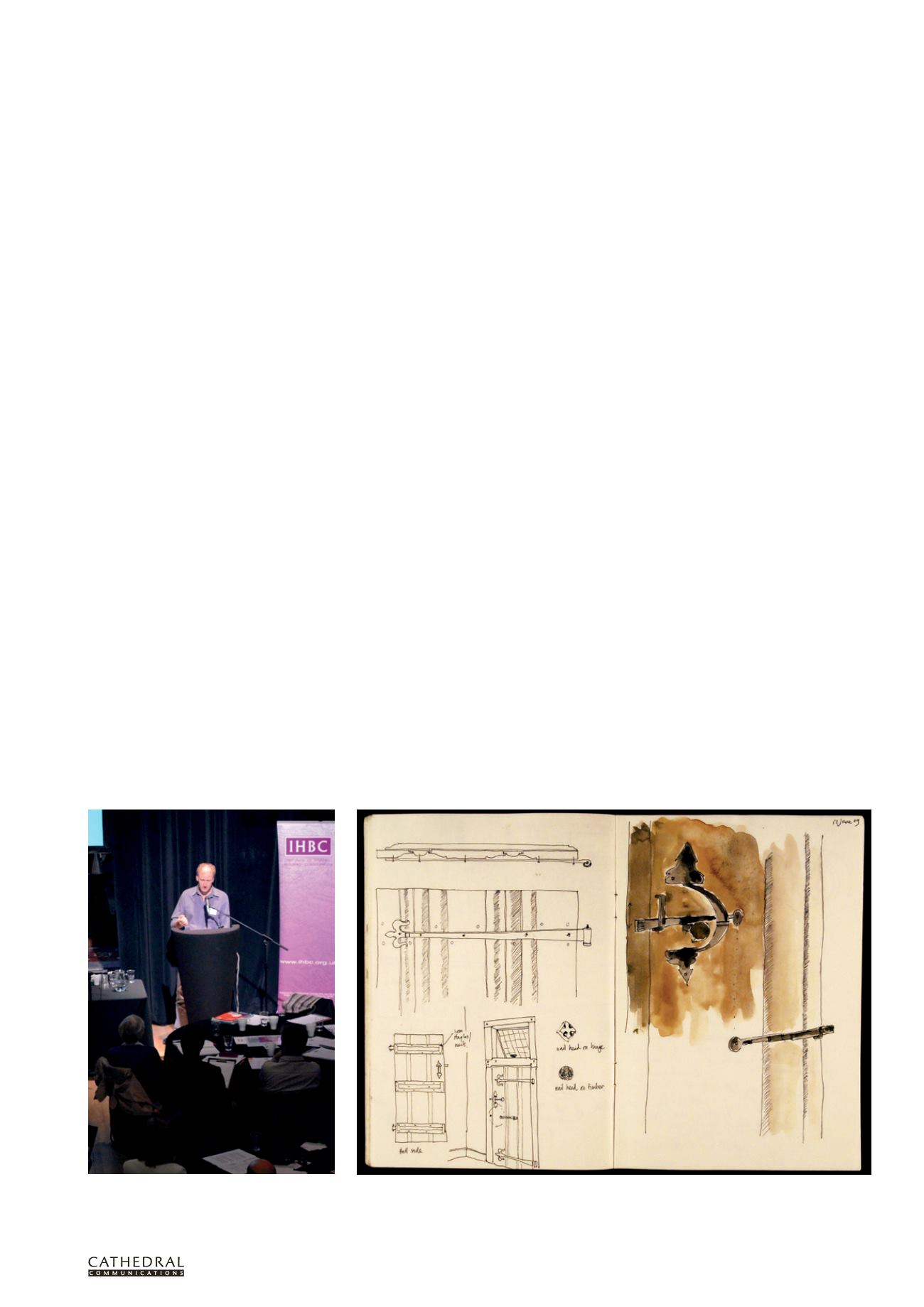

T W E N T Y S E C O N D E D I T I O N
T H E B U I L D I N G C O N S E R VAT I O N D I R E C T O R Y 2 0 1 5
1 8 3
USEFUL INFORMAT ION
6
skills needs analysis,
Built Heritage Sector
Professionals: Current Skills, Future Training
,
was conducted by the National Heritage
Training Group in 2008. Of the building
professionals surveyed, 65 per cent did not feel
that their formal education had prepared them
adequately for working on pre-1919 buildings.
Furthermore, 68 per cent believed that much
of the skills and knowledge they needed for
heritage work had been self-taught.
The report also noted that while many
building professionals become members of
professional bodies few become building-
conservation accredited.
It is unsurprising then that English
Heritage, Historic Scotland, the Heritage
Lottery Fund and others have long recognised
the value of accreditation in allowing
clients to focus on those with the necessary
skills through exclusion of non-accredited
professionals from grant-aided work. This
approach has sometimes drawn resentment
from those who are not accredited and
oppose the principle of accreditation.
Accreditation is not the right route for
everyone but the aim of this article is to
inspire those not yet on their professional
register and provide guidance on how to
achieve this.
FIRST STEPS
Recognising your own knowledge gaps is a
very good starting point and will help to give
some direction to your training. For example,
you may be working on minor alterations
to a timber frame building for a domestic
client but know little about timber. Use this
as an opportunity to attend a course on
timber framing to boost your CPD, and buy
yourself a good book on the subject (English
Heritage’s recently updated
Practical Building
Conservation
series is an excellent place to
start). Speak to other people on the course,
and see if you can visit a larger building that
they are working on. Perhaps there is a local
timber framing contractor who you could
shadow for a day. Or maybe there are other
historic timber buildings nearby that you
could draw and study at the weekend.
Some areas have local archaeology
or vernacular building recording groups
which can provide opportunities to learn
in a welcoming environment from those
with greater experience. Keep a notebook of
sketches, diagrams and notes to record what
you are seeing and learning.
Accreditation, however, requires more
than a knowledge of traditional building
methods and how they work. It also requires
a deep appreciation and understanding of
conservation philosophy, a broad view of
historical development and an ability to
apply these more ‘thoughtful’ skills to the
practical job of conserving a building or
site. There are many short courses which
focus on conservation philosophy and some
excellent resources which will guide you in this
direction. The Association for Studies in the
Conservation of Historic Buildings (ASCHB),
Conference on Training in Architectural
Conservation (COTAC) and the Institute of
Historic Building Conservation (IHBC) all have
excellent websites with wide-ranging guidance
and information on forthcoming courses
and CPD events (see further information),
but do make sure that these comply with
the ICOMOS Education and Training
Guidelines. Conservation events listings
also appear on page 190 of this directory and
online at
www.buildingconservation.com.
The Understanding Conservation website
(see further information) is a very useful self-
assessment tool which takes users through a
series of free CPD units covering ethics and
conservation philosophy. Perhaps one of the
very best ways to gain a broad introduction
to the principles of conservation is to take
the SPAB’s week-long Repair of Old Buildings
Course or attend the RICS or IHBC summer
school and AGM events.
The SPAB, RIBA and IHBC all offer short
courses, conferences and CPD events aimed
at extending knowledge of conservation at
the practical, technical and philosophical
levels. There are many other groups such as
The Ecclesiastical Architects and Surveyors
Association (EASA) and the Building Limes
Forum which it would be worth becoming
involved with to extend your personal
conservation network and to gain a broader
perspective on your work.
For those with more time, a postgraduate
course in architectural conservation
might be the best option. For both RIBA
conservation accreditation and IHBC
membership the number of case studies
or years of experience required is reduced
for those who have completed a recognised
course, so it is advisable to read the guidelines
for accreditation schemes carefully when
choosing a professional training route.
Once you are in the mind-set of how to
acquire the necessary skills, you will find that
it becomes easier to broaden your knowledge.
The key when first applying for accreditation
is to make sure that you try to work for a
practice that has conservation experience, or
if that is not feasible, to sign up to the AABC
apprentice mentoring scheme. This means
that an experienced professional local to
you will offer guidance and support, helping
you throughout the process of gaining the
necessary experience. An alternative is to
aim to become a conservation registrant as
part of the RIBA accreditation scheme, and
then progress to higher levels as you gain
experience.
Don’t worry about the scale of the project
or the apparent lack of glamour in repointing a
wall – this is not what matters. What matters
is that you successfully demonstrate your
understanding of the process of conservation,
the principles involved, the different
approaches, and that you can self-evaluate
your involvement afterwards.
Keeping a sketchbook is an excellent way to record specialist terms, explain how things work and underpin
knowledge and understanding. (Illustration: Lucy Stewart)
IHBC branch events provide regular opportunities to
boost CPD and extend professional networks.
















